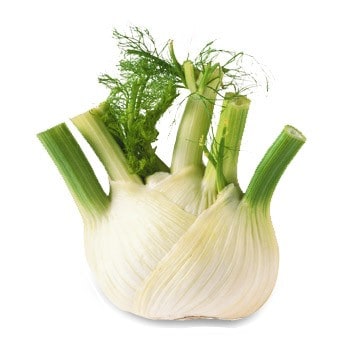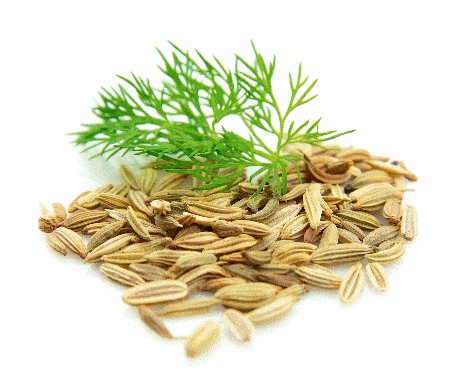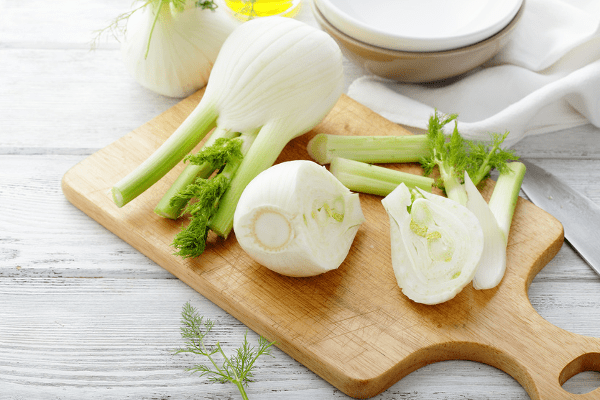A reliable source on many subjects.

A reliable source on many subjects.

![]()

A plant with a versatile reputation, fennel can be considered difficult to marry and too strong-tasting for some sensitive taste buds. Well-known in Europe and America, yet little consumed, it can be very effective if you want to lose weight in a healthy, natural way. Fennel has very few calories and burns fat while draining water accumulated in the body.
In this article, we’ll be exploring (almost!) all the health benefits of fennel in general, and the dietary benefits in particular. We’ll also look at some of the ways in which fennel can be used in our daily diet to make a variety of delicious, weight-saving dishes.

Native to the Mediterranean basin, fennel is a vegetable with a pronounced aniseed taste. It can be recognized by the color of its white bulb and its leafy green stalks. There are three known varieties of fennel. Firstly wild fennel, the most common species, is used to extract essential oils and seeds for spices. Florence fennel, on the other hand, is available on the market for eating and cooking. Finally, garden fennel or sweet fennel is smaller than common fennel and is also used to extract essential oils.
Fennel can be cooked as a savory dish, but also in salads or even as a dessert. What’s more, its peak season runs from May to December, and it’s available all year round. It’s perfect for slimming down, as it’s very low in calories and packed with nutritional virtues.
The nutritional benefits of fennel vary according to its consumption. In fact, its intake varies slightly depending on whether it is eaten raw or cooked.
Fennel is rich in vitamin B9, between 28mg and 31mg per 100g. It provides around 14.25% of the daily nutritional value when eaten raw, and 16% when cooked.
Vitamin C content is around 10mg per 100g. It therefore provides 13.15% of the NRV when raw.
The potassium content is interesting, at around 400mg per 100g, i.e. 20% of the NRV when raw, and 270mg per 100g, i.e. 13.5% of the NRV when cooked in water.
It also represents 9.5% of the NRV for manganese and 5% for zinc when raw. It represents 16% of the NRV for copper and around 7% for iodine when cooked.
Fennel provides a very limited amount of lipids compared to other vegetables. It provides just 0.20g per 100g when raw, and even less when cooked in water, i.e. less than 0.10g per 100g.
Fennel contains a decent amount of fiber, around 2.23g per 100g when raw and 0.8g per 100g when cooked, but the quality of the fiber it contains offers many advantages.
Fennel has a very low sugar content compared with other vegetables. It contains around 2.3g per 100g eaten raw, and even less when cooked in water, i.e. around 0.8g per 100g.
 Fennel is recognized for its effectiveness in treating dyspepsia and aerophagia, which are painful digestive disorders that can occur occasionally or chronically. It is also recommended for flatulence and lack of appetite. It also stimulates colon muscles. All thanks to the good fiber it contains.
Fennel is recognized for its effectiveness in treating dyspepsia and aerophagia, which are painful digestive disorders that can occur occasionally or chronically. It is also recommended for flatulence and lack of appetite. It also stimulates colon muscles. All thanks to the good fiber it contains.
Fennel seeds are recommended for breast-feeding mothers because they are galactogenic, activating milk production and promoting lactation. As an infusion, fennel relieves colic in babies thanks to its digestive properties. However, you should avoid giving your baby more than 100 ml of infusion to avoid overtaxing the kidneys.
Fennel has diuretic properties. It therefore effectively combats the water retention from which many people suffer, especially in the ankles, legs and feet, but also in the stomach, face and eyelids.
Fennel has numerous anti-microbial properties that help treat inflammation of the respiratory tract and combat coughs, especially if fennel honey is consumed as an herbal tea.
Fennel has an effective action on estrogen. It can therefore be used to treat amenorrhea, i.e. the absence or disruption of menstruation, as well as dysmenorrhea, i.e. period pain and spasms.
It has even been clinically proven to combat hirsutism when used as an essential oil cream.
Rich in potassium, vitamins and calcium, fennel is recommended for preventing bone fragility. If eaten regularly, it helps prevent osteoporosis.
As an herbal tea, fennel improves sleep quality, notably by soothing muscles and sinuses and combating spasms and respiratory discomfort.
With a very low caloric intake of around 20 Kcal per 100g, fennel is the ultimate slimming vegetable, acting as a fat burner.
It also provides easily digestible fibers that quickly bring on a feeling of satiety. Not to mention that it facilitates intestinal transit and helps combat bloating.
As mentioned above, fennel acts as an effective diuretic and drainer, helping to eliminate assimilated cellulite and combat water retention, thus helping to slim the buttocks and thighs.
If you can’t stand the taste or smell of fennel, but want to benefit from its many virtues, you can turn to fennel-based dietary supplements or slimming products.
Fennel should be selected according to three criteria. Firstly, the stalks should not be cut to ensure freshness. Secondly, its leaves should be fragrant. Finally, the bulb should be heavy and firm.
To store in the fridge, simply cut off the stems and place in a crisper, or in a box if you don’t want to soak your food and fridge in aniseed fragrance.
It can be stored for up to a week without losing any of its flavor.
If you want to know how to cook fennel, there are many recipes to choose from, from the easiest to the most elaborate. Fennel goes well with salads, hot and cold dishes and even desserts.
Let’s take a look at some healthy ways to cook fennel, which will help you rediscover this sometimes underestimated vegetable and get back on the road to a healthy diet and a slim body.

For starters and salads
The simplest and most popular way to use fennel is in salads, with oranges, raisins, grapefruit or carrots for a sweet note, or tuna or spinach for a savory one. All served with vinaigrette, mustard or simply a drizzle of olive oil.
If you prefer hot starters, a potato, onion and fennel soup will be perfect, especially in winter.
As a main course
Fennel is undeniably famous as an accompaniment to all kinds of fish dishes, which can be grilled or en papillote to avoid fat. It also goes well with mussels and seafood. If you don’t like fish, you can add it to roast or orange-grilled pork, or even beef.
You can also prepare savory tarts with salmon and cooked fennel, or light quiches with yogurt.
In juice
Fennel can be used to make a refreshing and delicious juice.
It can be blended with apple, carrot and lemon, or simply with lemon and a touch of honey or Stevia.
For dessert
Fennel can even be incorporated into desserts. It can be blended with lemon for a fresh sorbet, added to a pear or raisin tart, or used in compote with apples, pears or figs.